A networked approach to low-carbon heat
How might we enable streets and neighbourhoods to switch to low-carbon heat?

Networked heat pumps offer a way to decarbonise large numbers of homes. We’ve been exploring different models for delivering this and identifying the barriers for deployment which exist in the UK.
What are networked heat pumps?
Low temperature heat networks with shared infrastructure in the road and an individual ground source heat pump in each home. They are also known as shared ground loop heat pump networks.

We’ve been working with Kensa, who carried out the UK’s first in-road, networked heat pump installation as part of their Heat the Streets initiative. Working across various tenures, the scheme moved upfront costs to a fixed standing charge for households, enabled by support from the European Regional Development Fund.
We’ve also engaged with a wide range of partners involved in testing and scaling this approach to networked heat.


Which homes are most suitable for shared ground loop heat pump networks?
Terraced streets, tenements, and other homes in medium-density where air source heat pumps are harder to install, or in areas where larger district heating schemes are not present.


What’s needed to make this happen at scale?
Delivering networked heat involves challenges spanning different scales and organisations simultaneously – from individual household decision-making to large-scale planning and policy. In our work we’ve been looking at how these different factors interact within different delivery models.
Three models for delivering networked heat at scale
We have observed three emerging routes: coordinated commitment, infrastructure-led and a hybrid model.
We’ll illustrate these approaches using an example of a terraced street.
Coordinated commitment
This involves multiple homes in a neighbourhood, usually around 30 homes as a minimum, working together to get infrastructure installed in their street. Once the infrastructure is in place only a few nearby homes might have the chance to connect in the future.


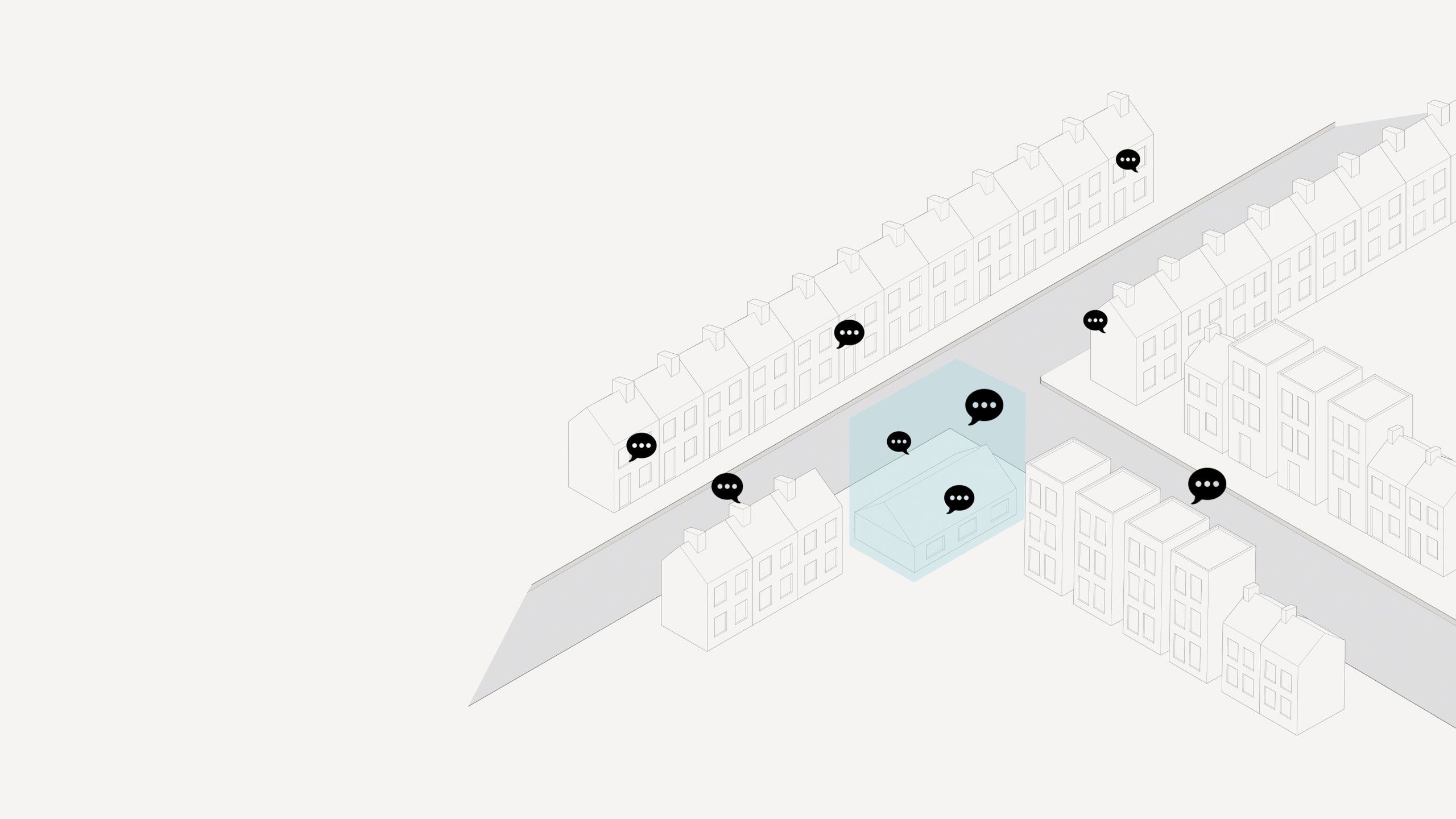
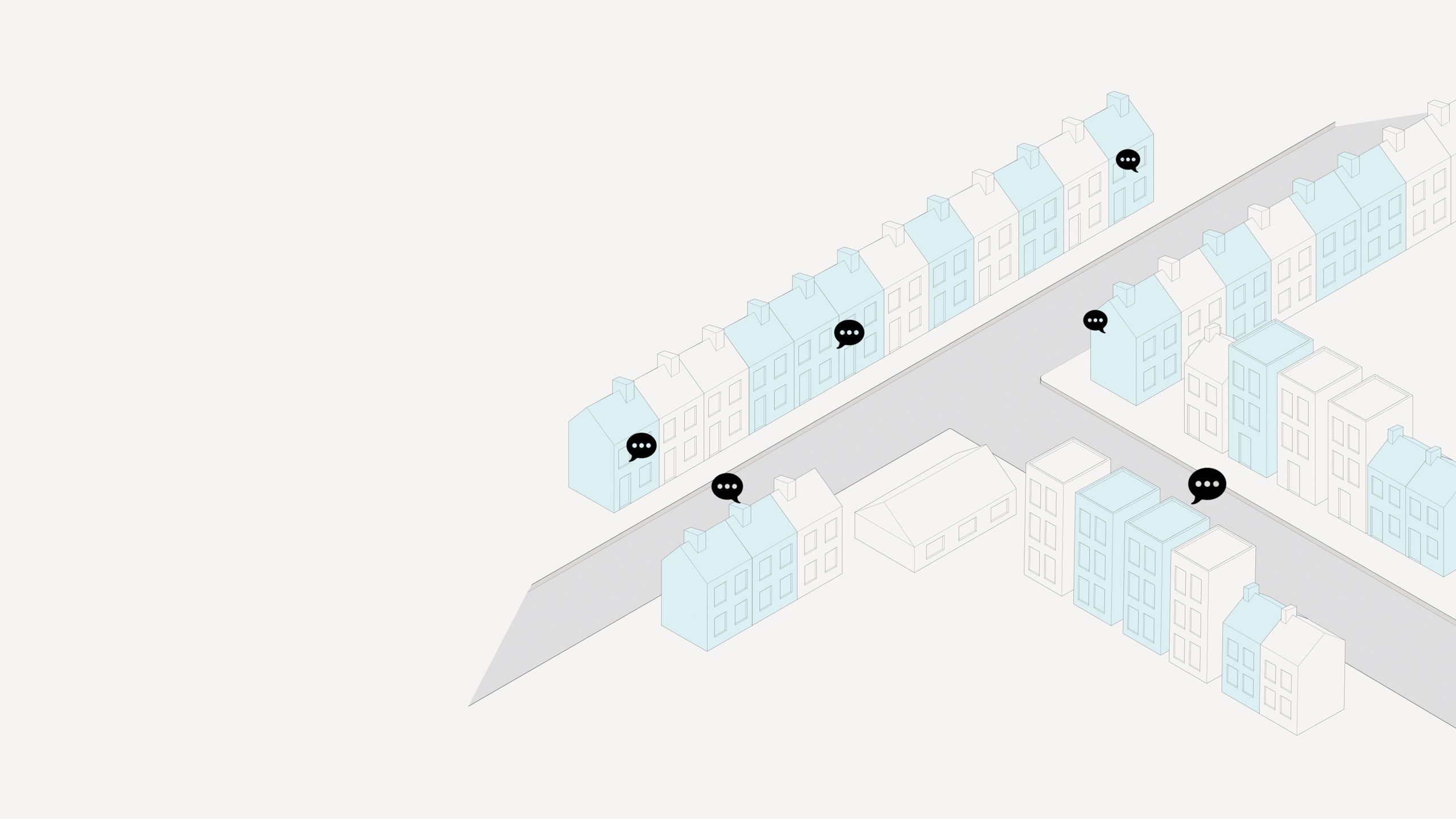

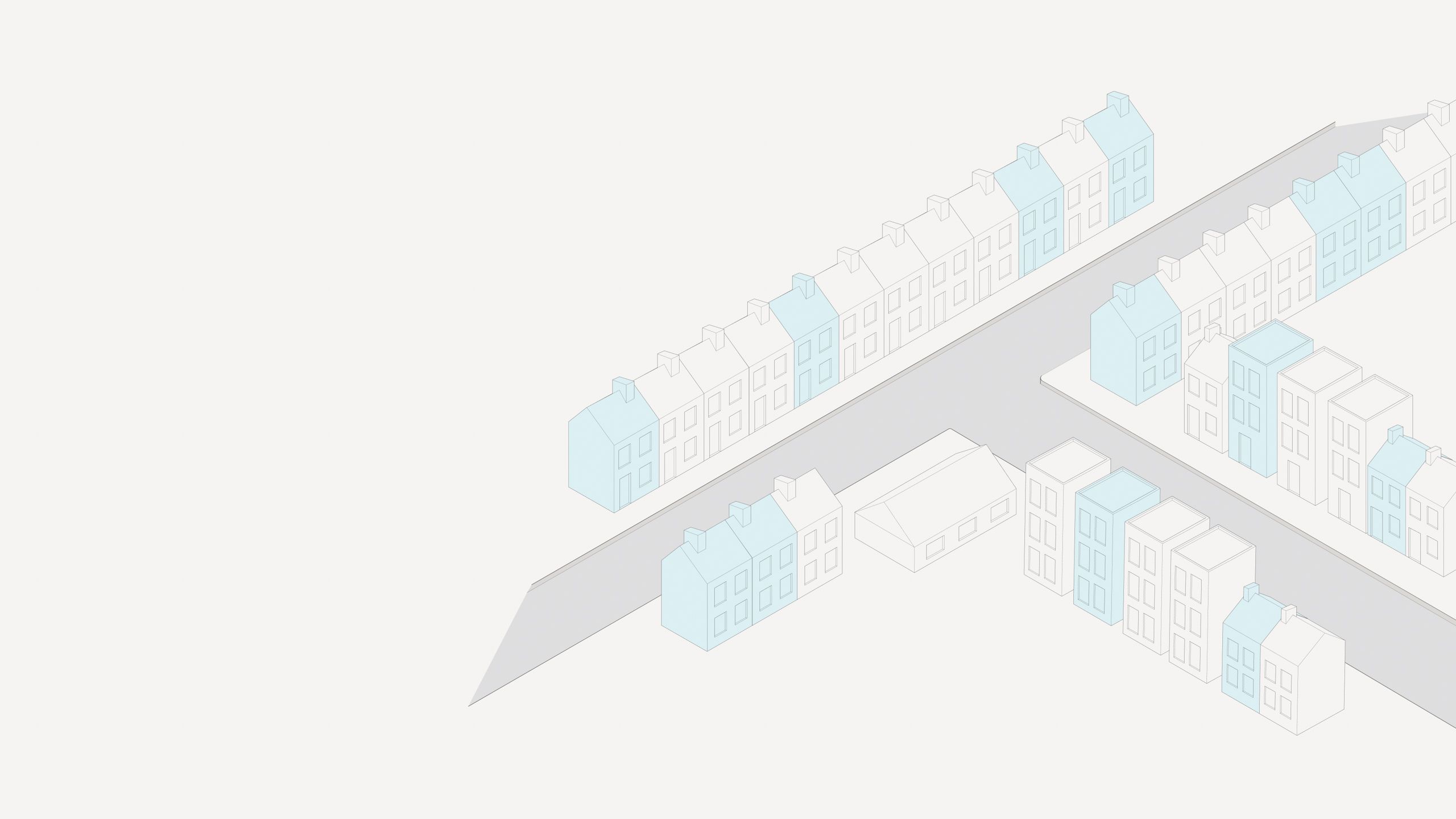
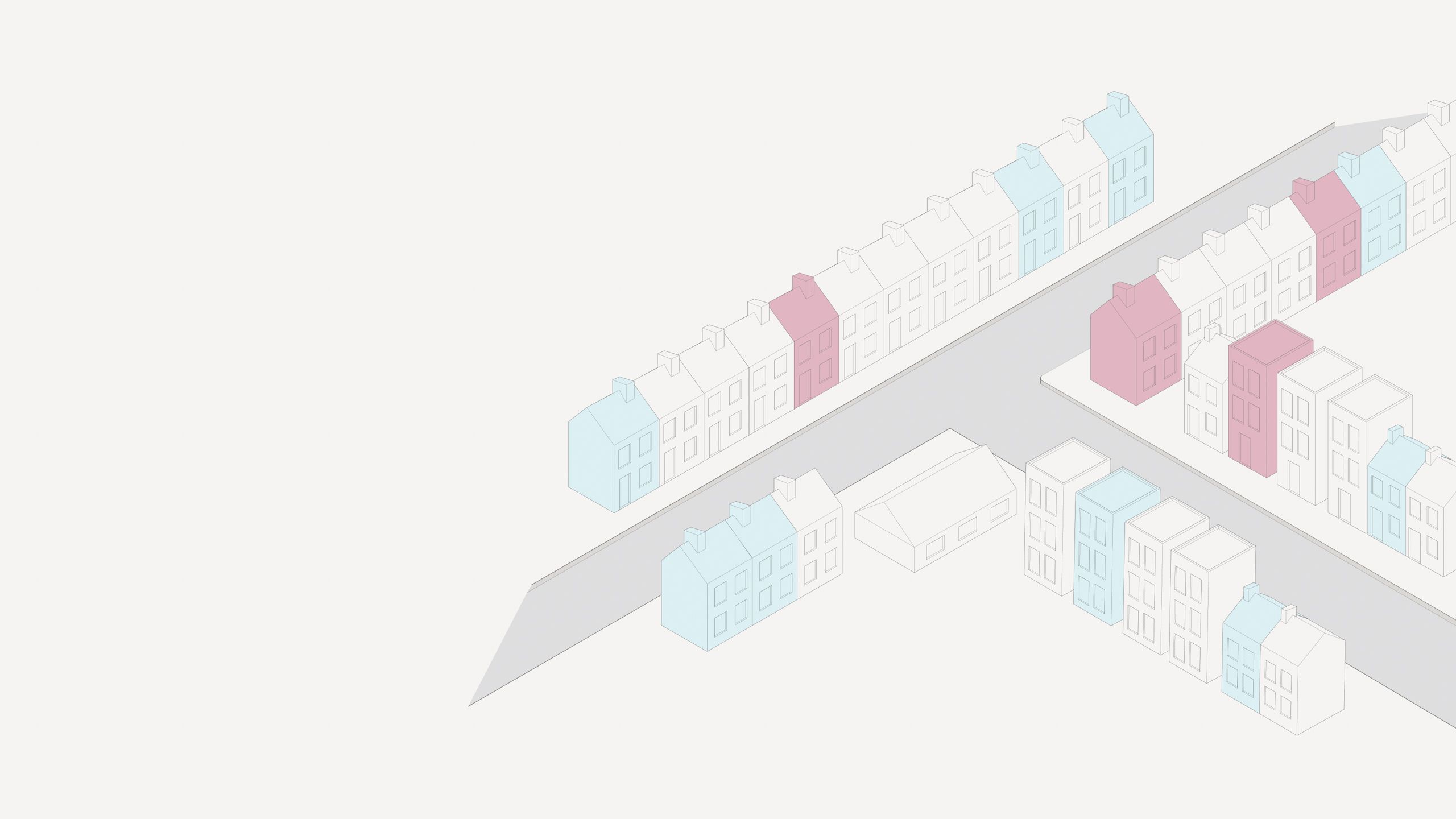




Awareness and preparation
These grassroots schemes tend to be initiated by the community. Leadership could come from an existing community group or an individual community champion gauging interest for the scheme.
Feasibility
If the local community demonstrates significant interest, an infrastructure owner, such as Kensa, may consider the area’s feasibility for a scheme. At this point there is no firm commitment from households.
Acquisition
As the project moves forwards to formally signing up residents, further groups may become involved, including landlords and local authorities for outreach.
Project leadership begins to change as the infrastructure owner leads the process, though community groups play a vital role in local engagement and mediation.
Surveying and design
Once agreements are in place, design of the infrastructure and the individual in-home works occurs. Any exploratory surveys from the feasibility analysis help streamline this process.
As the scale of work, timelines and costs are drawn up, some homes are likely to drop out.
Payment and financing
Most likely, costs associated with in-ground works will be applied onto a standing charge for households, while costs for the heat pump installation will be applied separately.
The way in which households finance the in-home works will vary by individual circumstance.
Financing
Some homes may look to personal finance.
Financing
Some may have enough savings available to pay upfront.
Financing
Others may have been referred through, or find themselves eligible for, government schemes which provide support, such as the Energy Company Obligation scheme (ECO).
Delivery
The in-ground infrastructure installation precedes individual home works. This involves drilling bore holes and trenching to properties.
Currently, schemes are typically designed with little future-proofing (additional homes would require additional infrastructure).
Delivery
The final step is the most disruptive for households – the installation of the ground-source heat pump and connection to the network by heating engineers. This will likely include upgrades to hot water storage and replacing radiators.
Infrastructure-led
In this pathway, infrastructure is installed into streets in anticipation of demand from homes, much like broadband services. Households can connect a heat pump to the network at their convenience. Infrastructure is sufficient for several additional homes from the target area to join until a planned system upgrade becomes necessary.


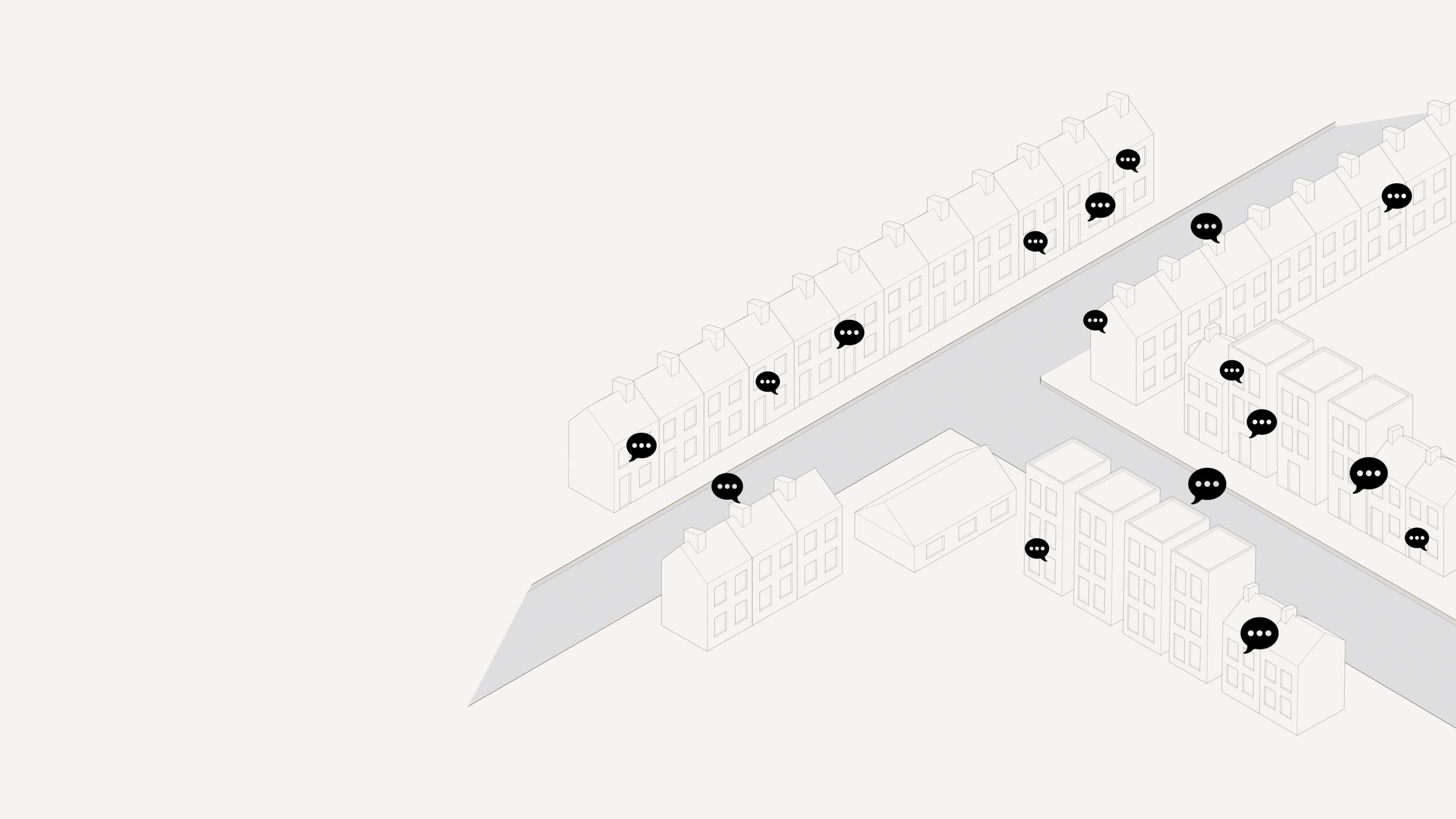
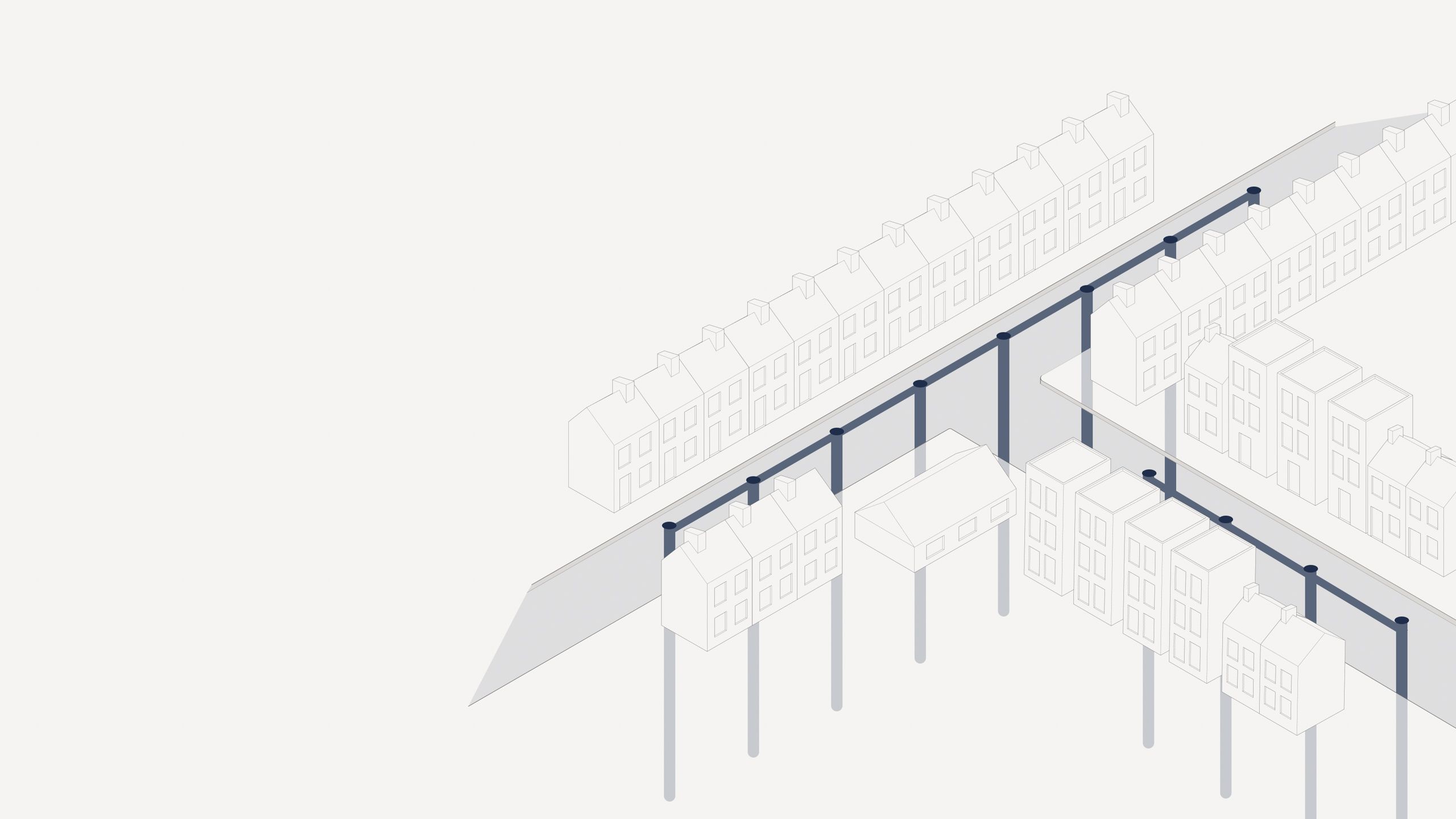


Feasibility
In this pathway feasibility studies would be conducted before any significant outreach to households. Factors such as the density or orientation of homes, geology, grid capacity and tenure help to indicate the number and rate of likely connections to infrastructure.
Awareness and preparation
Infrastructure-led projects might still rely on some initial interest from households but much less than those delivered via coordinated commitment.
Engagement may be minimal and focus on informing rather than persuading.
Surveying and design
Survey and design for the in-ground works will be completed for the overall target area. However, in-home surveys may be limited to only a few for refining data-modelled estimates.
Infrastructure-led schemes also might have minimal coordination with any heating engineers.This means that households might simply be informed of compatible systems and maximum capacity.
Delivery
Homes would choose as and when to connect. This would be driven by individual factors such as finance, timing with renovation works, or a broken boiler.
Early adopters may be incentivised, either financially or by a limit on the number of connections.
Delivery
Over time, more homes should join the network, at preferred or convenient moments.
This may involve some external works to connect to the network. Costing structure and finance options are similar to the co-ordinated commitment model.
Hybrid
This pathway only needs a small number of homes to commit at the start, which can be facilitated by a single property owner making a significant investment or guaranteeing the initial work. These initial homes serve as anchor tenants, allowing for the initial installation of the required infrastructure. After that, other homes can connect at their own pace.


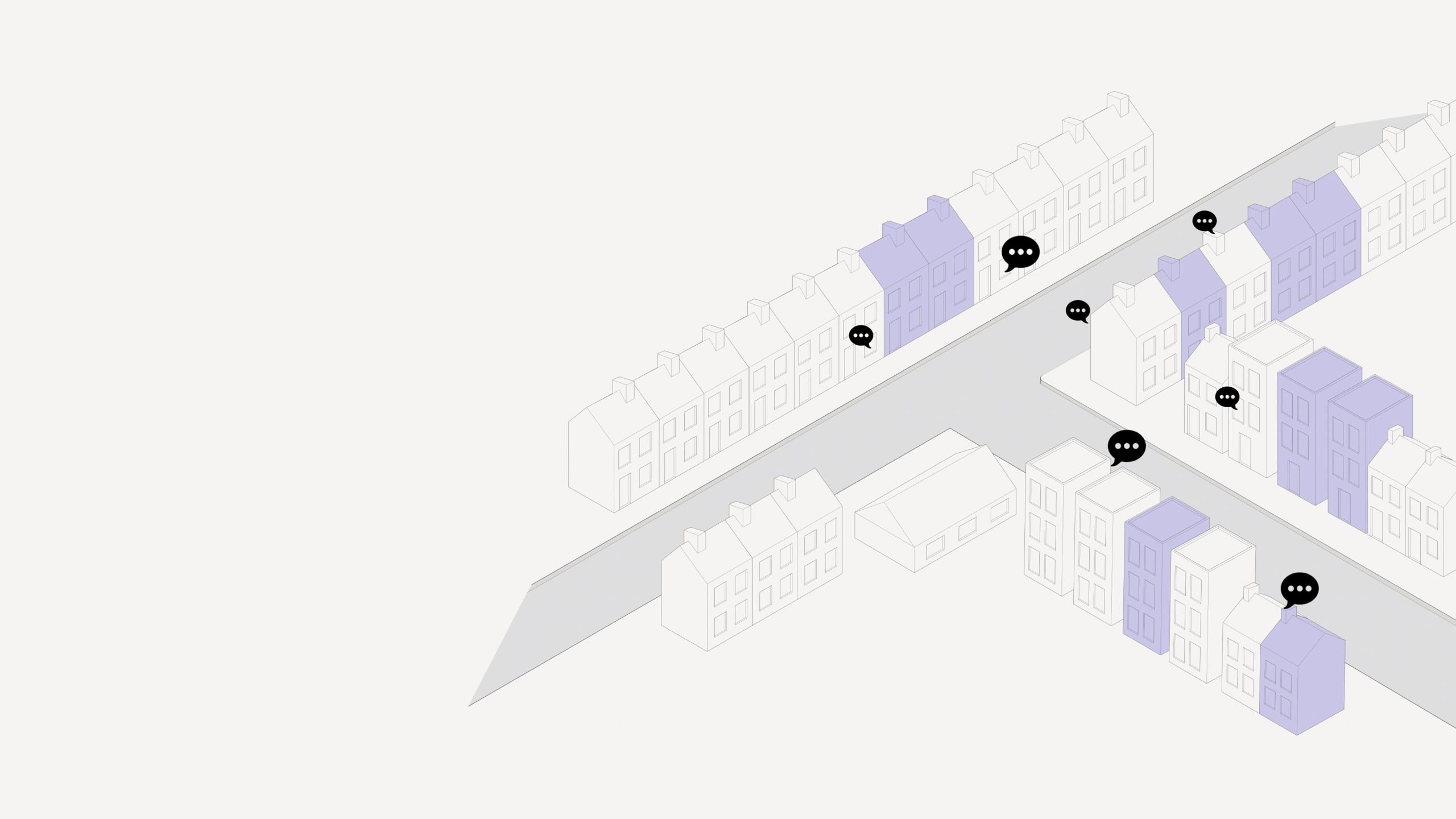

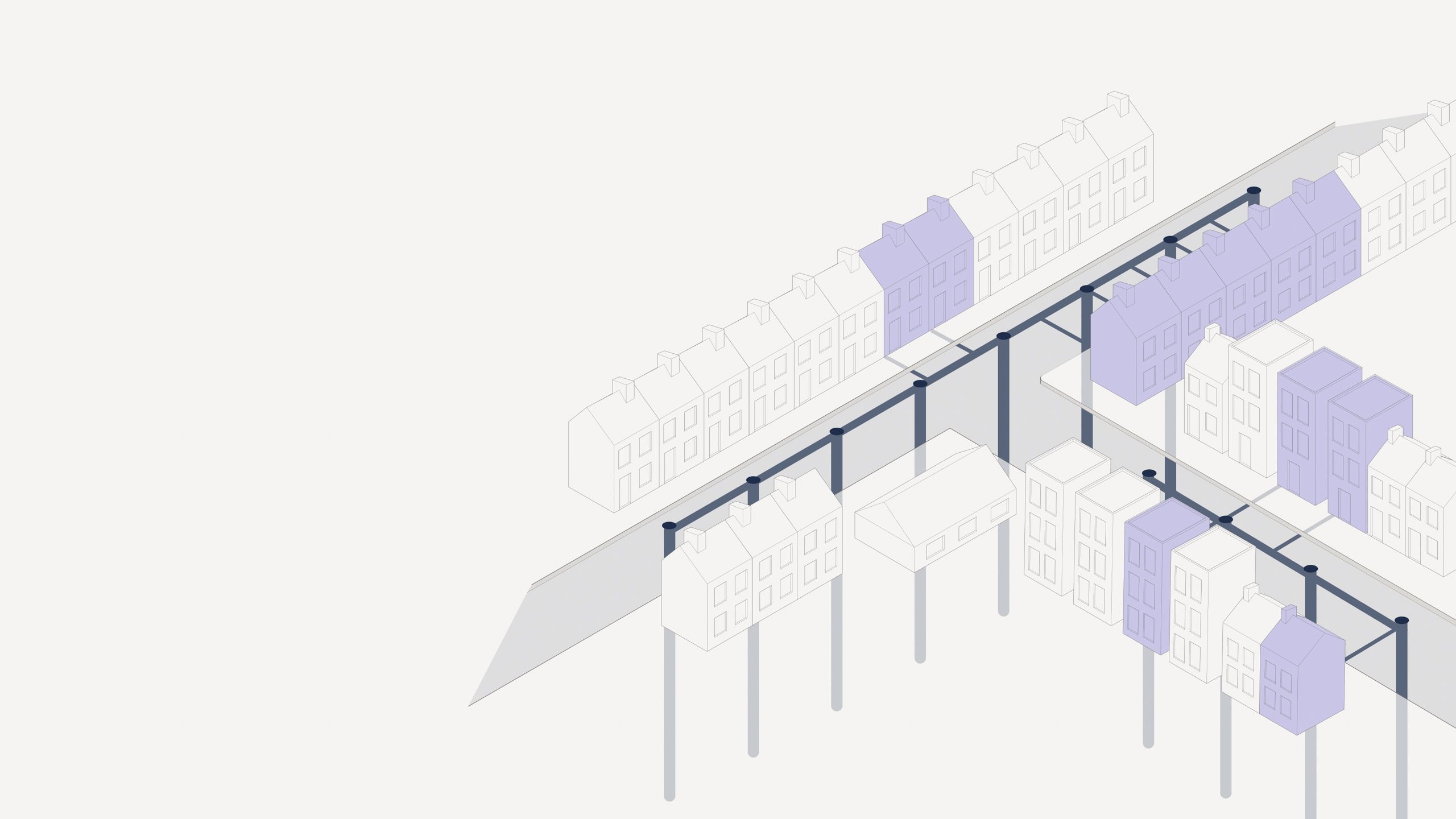

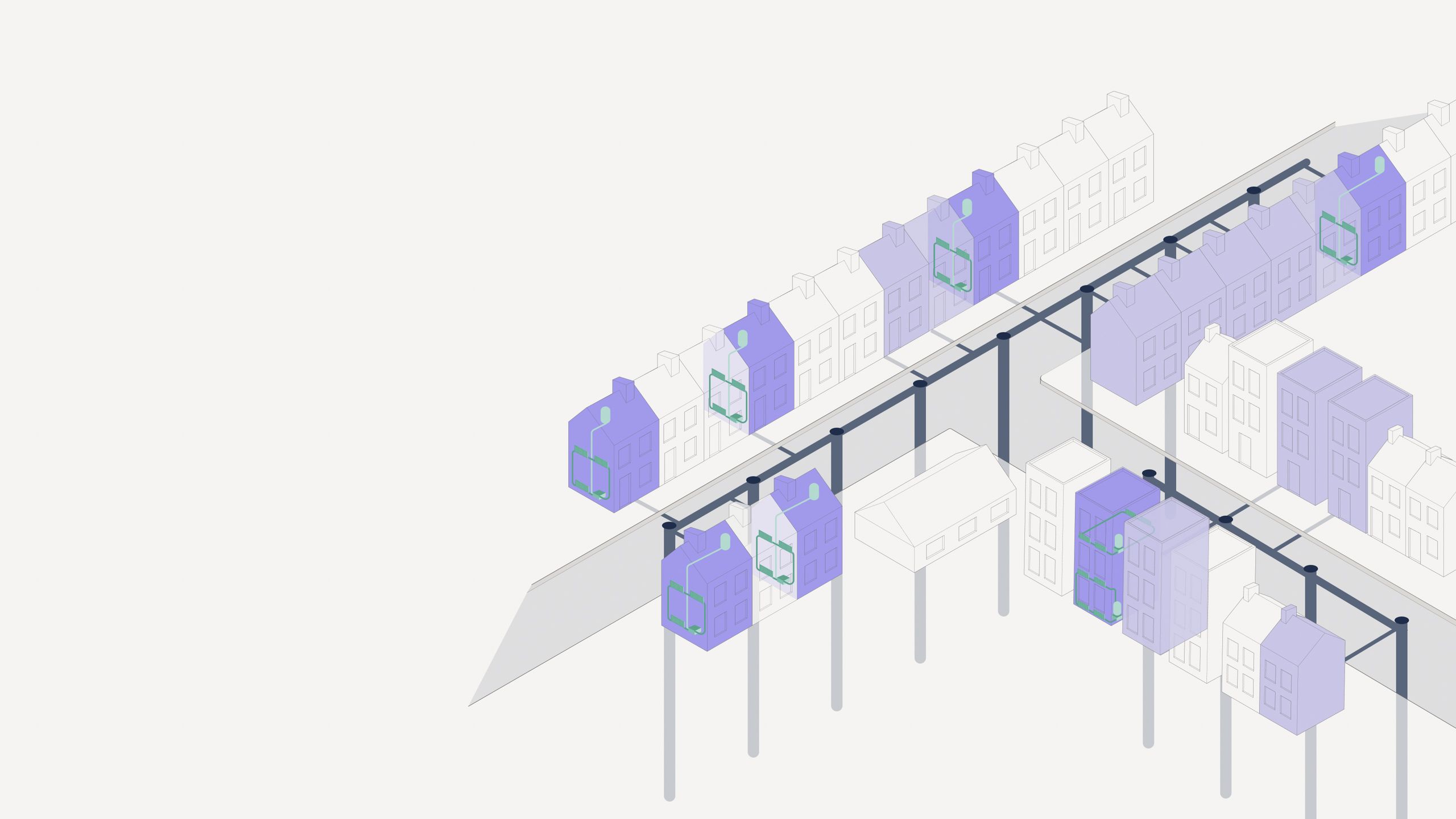
Feasibility
Feasibility studies would highlight areas of suitable housing density which have landlords that may own multiple properties in close proximity. Landlords, including local authorities, would be engaged, alongside a couple of individual households representing the most prevalent property type if absent from landlords’ stock.
Awareness
Raising awareness is a lower priority than other models. Initial outreach might be limited, relying mostly on organic promotion from the anchor tenant households and notices from local authorities.
Surveying and design
This stage is similar to the infrastructure-led model, except that target areas may cluster more on anchoring properties rather than on the most suitable homes.
Delivery
The infrastructure would be installed with a certain amount of future-proofing to allow for several future connections.
Delivery
The initial cohort of signups would then complete their heat pump installations (whether coordinated by the scheme or separate) and connect to the network. There may be financial benefits for homes in the first cohort, from natural cost efficiencies or incentives.
Further connections
Further homes would sign on to the scheme as and when appropriate.
Individual costing structure and finance options are similar to those stated earlier.
What are the opportunities to realise delivery at scale?
Through this mapping, we have identified some common challenges facing the delivery of networked heat pumps.
Nesta is seeking to work with partners to develop and test new approaches to solve these problems. A few of these approaches are highlighted below.
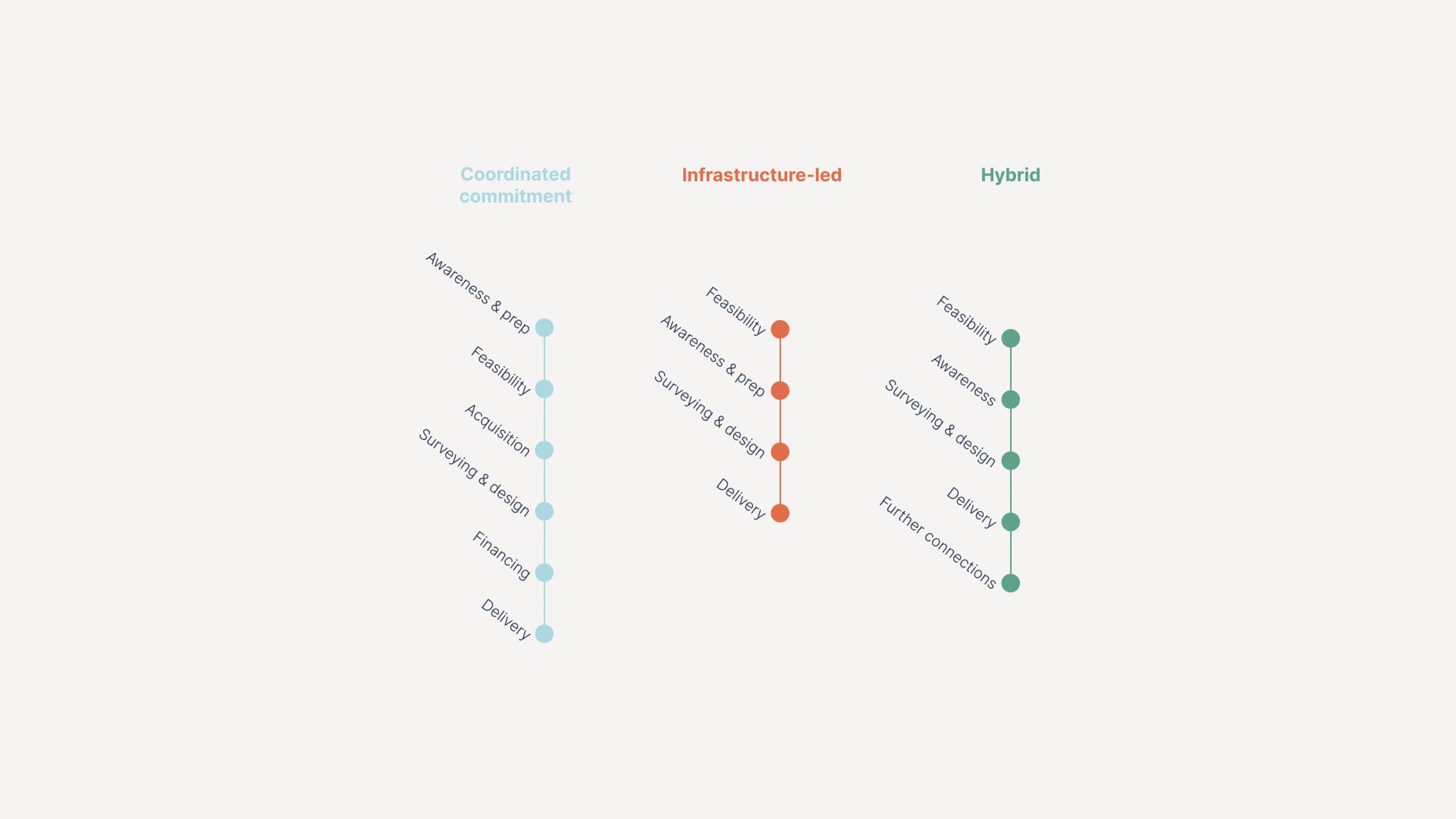

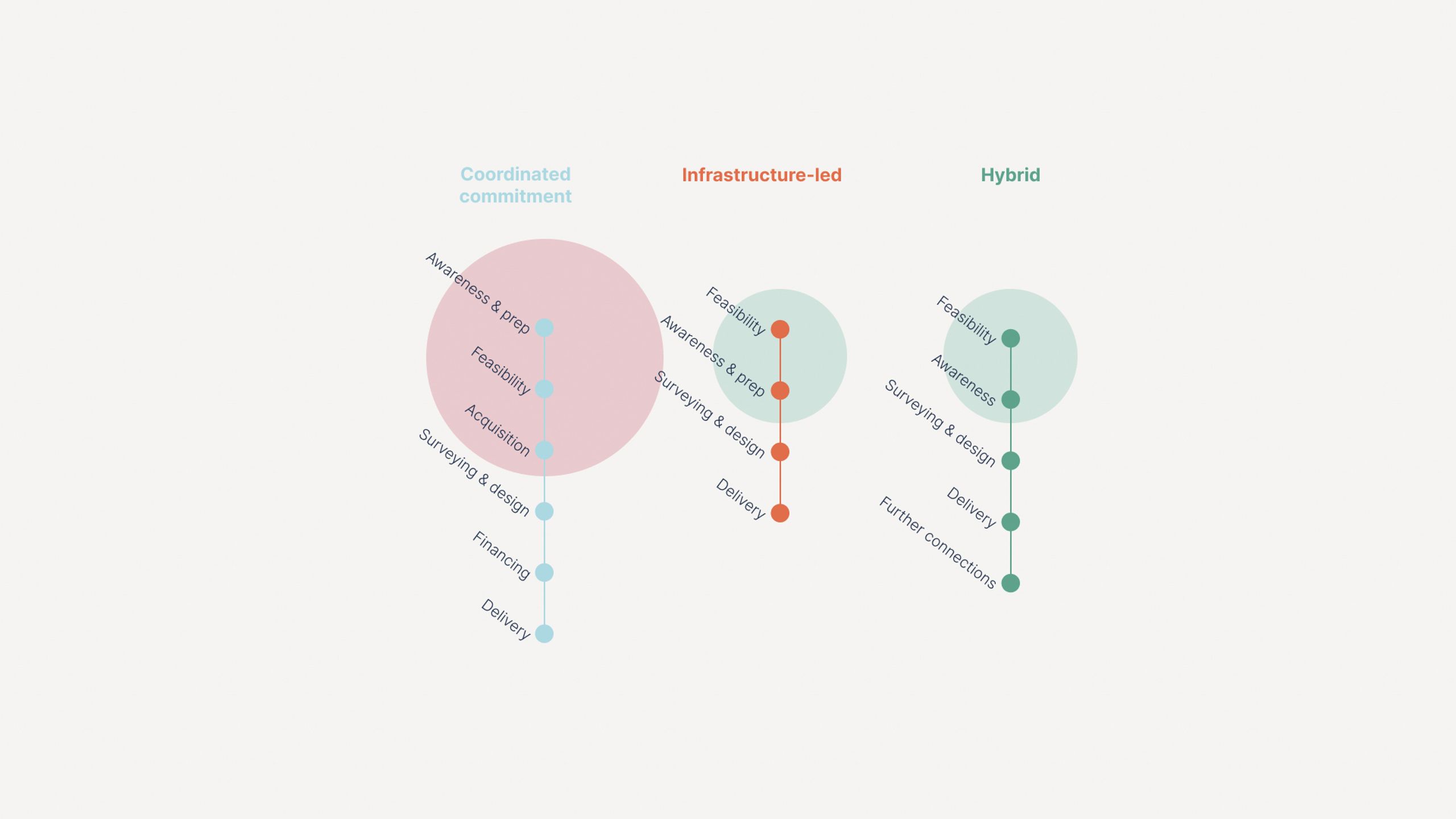
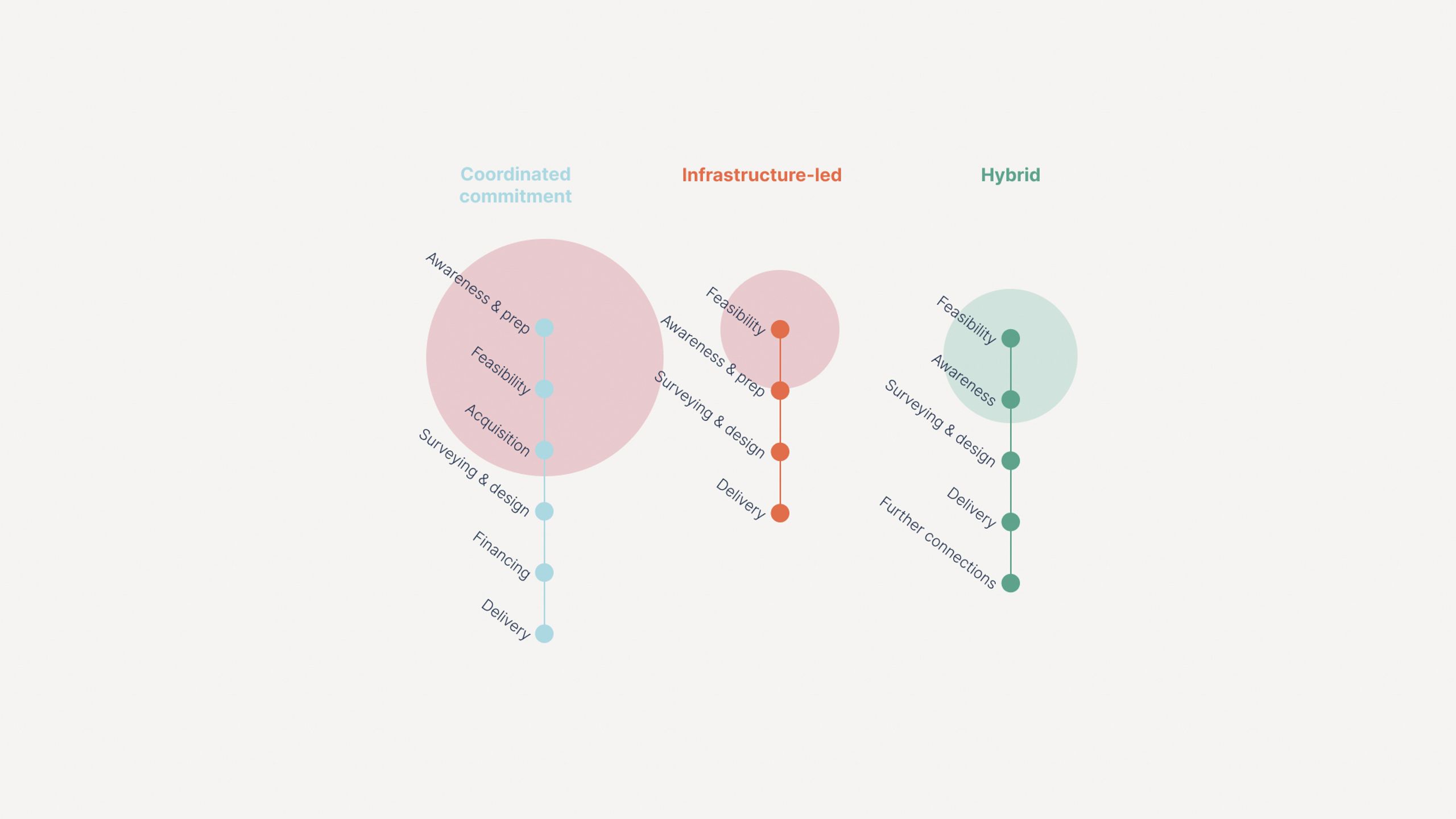
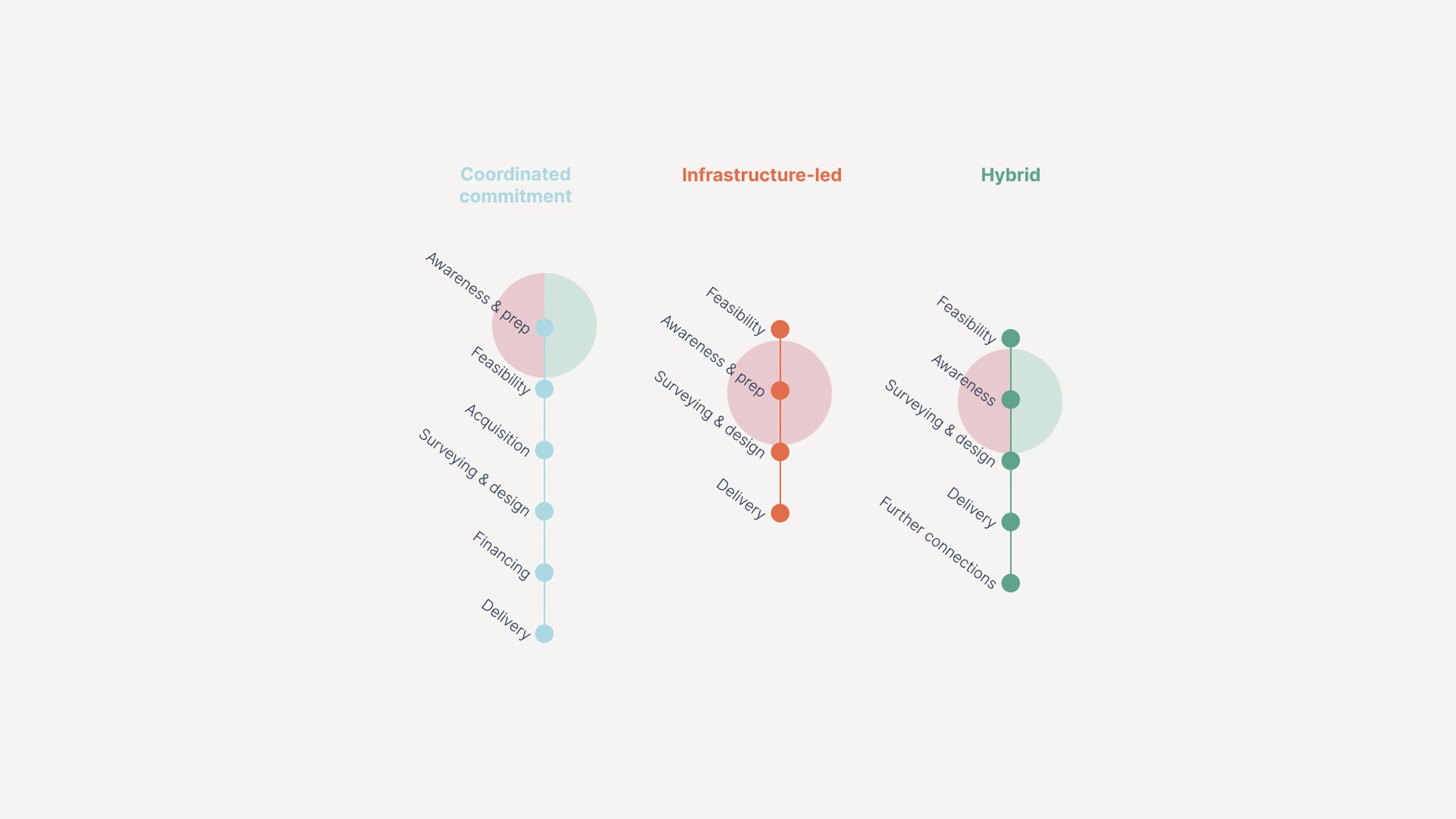
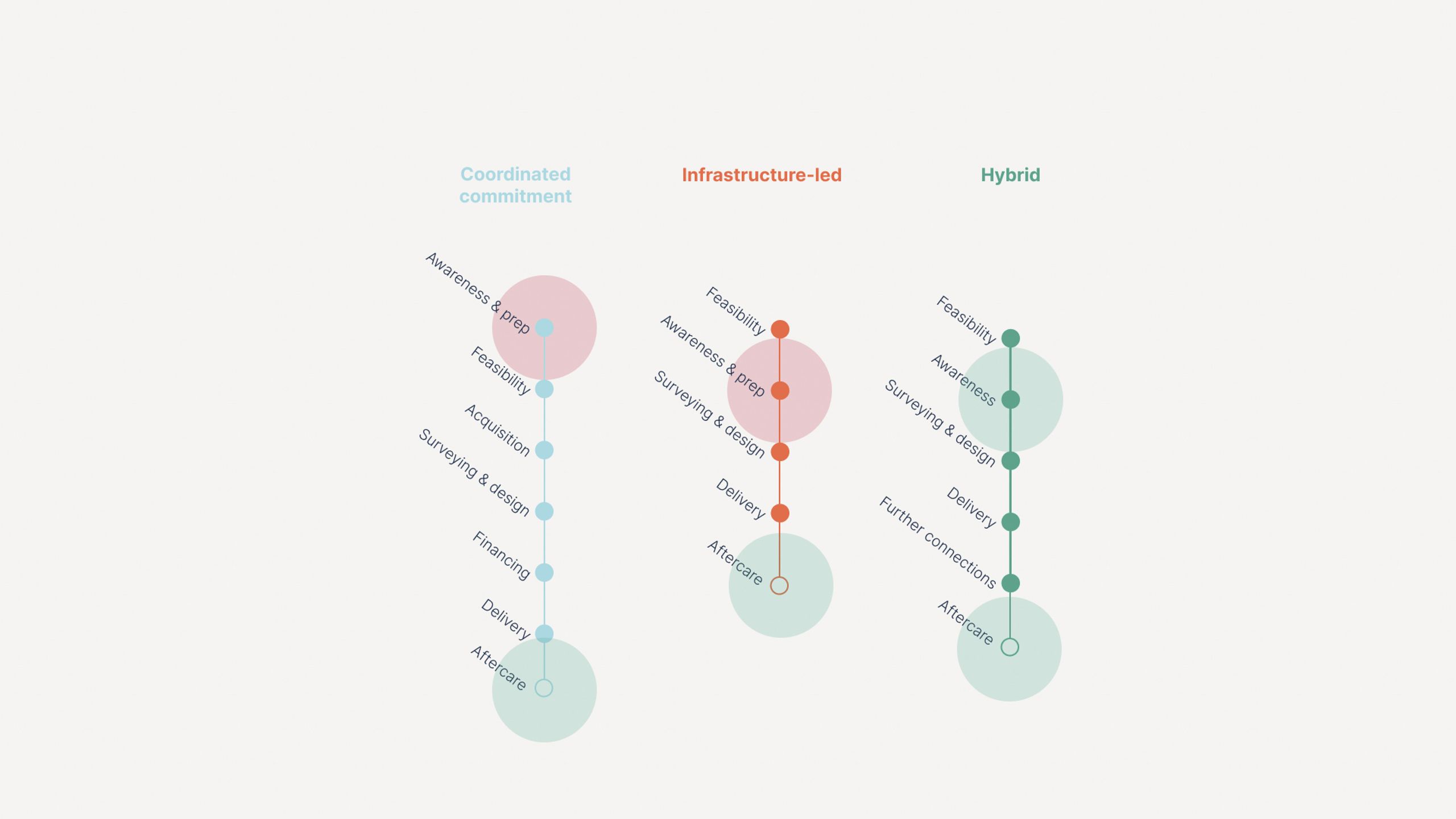
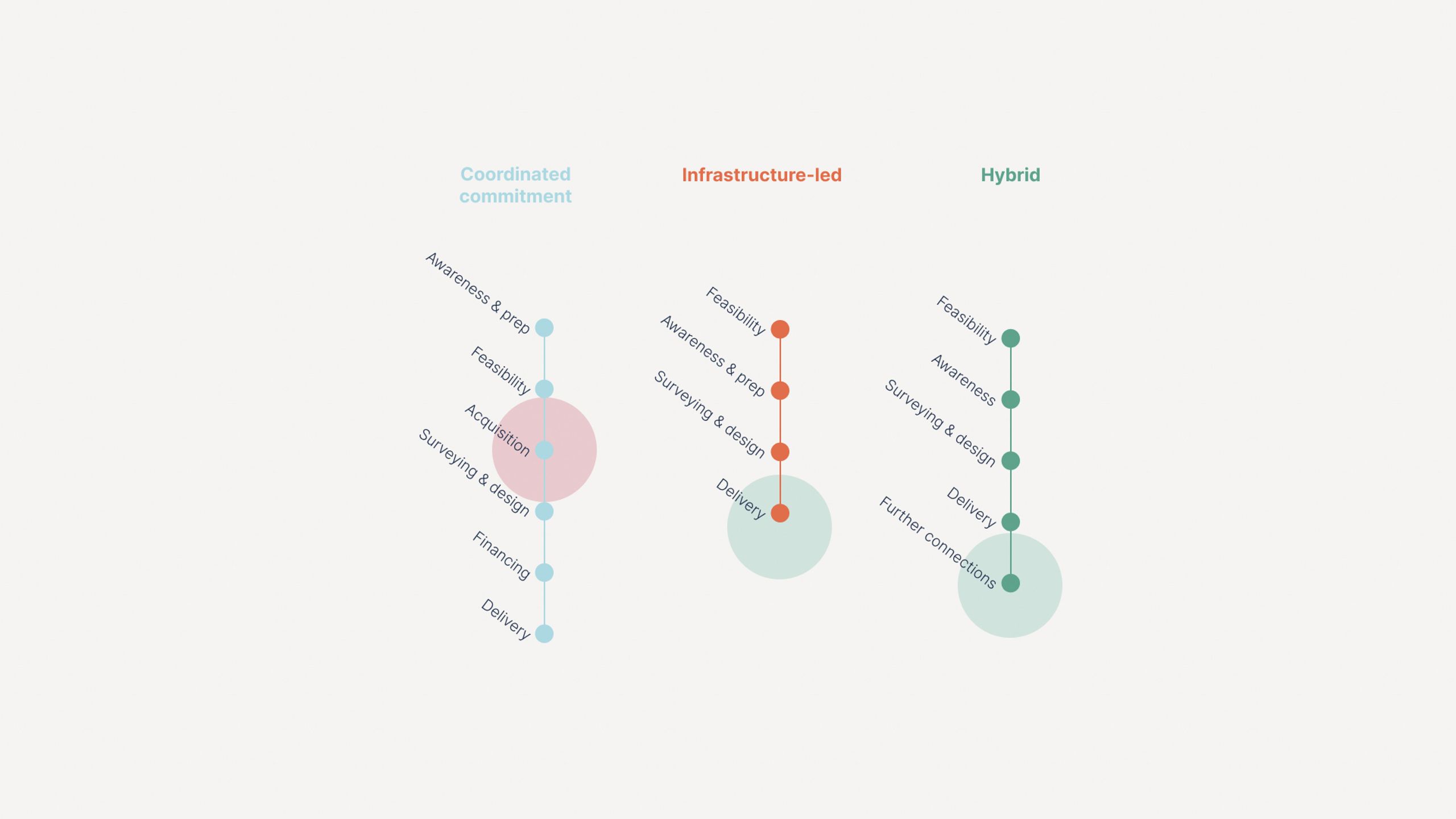

Investor confidence
Barrier: Investor confidence needs to be increased to enable funding for schemes and for fewer homes to be required to commit upfront.
Opportunity: How can emergent methods of delivery, such as the hybrid approach, be demonstrated to build investor confidence?
Effective communication
Barrier: Skills and capacity for effective communication and engagement with households are needed both individually and at scale.
Opportunity: How best can infrastructure-led and hybrid models separate the delivery of in-home and infrastructure works similar to current utilities?
Visibility
Barrier: Homes and households that are suitable for networked heat pumps need to be visible to delivery organisations.
Opportunity: How best can the location and density of homes suitable for networked heat pumps be identified and grouped accurately and efficiently?
Householder clarity
Barrier: Households need clarity on the suitable low-carbon heat options for their home and local area, and a timescale for transition.
Opportunity: How could guidance be more prevalent on the most suitable low-carbon heating for homes? Does communicating a long-term vision increase signups?
Consumer trust
Barrier: Confidence in the technology and trust in the ownership and delivery model needs to be built with households. Consumer protection and aftercare will also be key for hybrid and infrastructure-led.
Opportunity: How could existing organisations be used to increase trust across delivery and provide a clear direction to households? What roles are required and which organisation is optimal for each?
Hassle and disruption
Barrier: Disruption to the home, including hassle of connecting to a network, needs to be minimised – requiring a skilled and available workforce.
This is a major barrier for coordinated commitment.
Opportunity: How might supply chain pressures and the risk of poor outcomes for households be reduced?
Financing
Barrier: Consumers need access to financing that meets their specific circumstances.
This is critical for coordinated commitment.
Opportunity: How might place-based delivery of low-carbon heating enable different types of financing for households?
These three delivery methods may vary in prevalence over time.



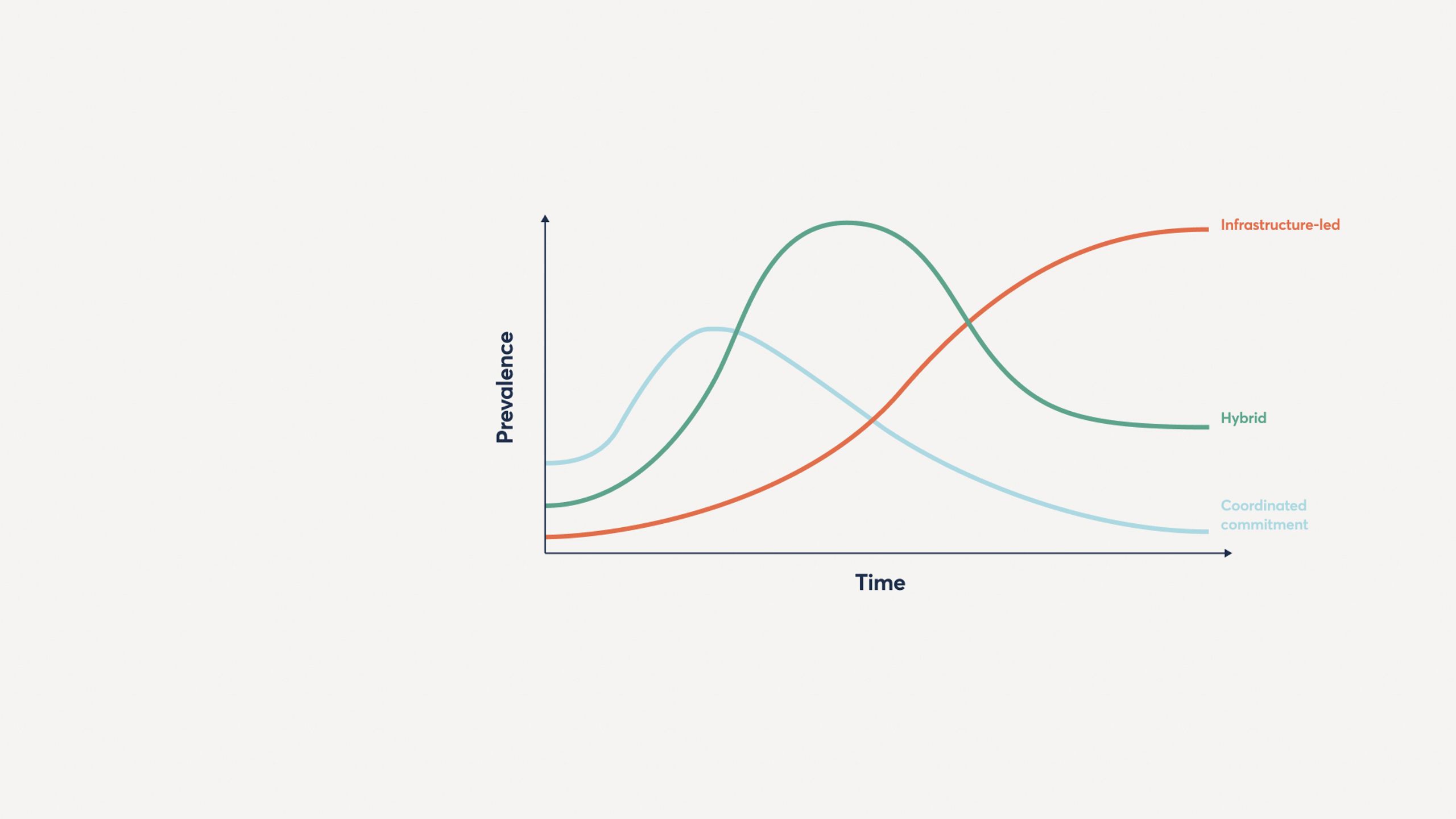
In the near term it is likely that the majority of schemes will take the coordinated commitment approach.
Institutional investors will need to be confident in the commercial viability to provide the capital crucial for funding the schemes.
In the mid-term the hybrid model will help to provide confidence that a networked heat pump approach is desirable to homeowners and can be scaled within relevant constraints.
With sufficient demonstrations in operation, investors will see networked heat pump infrastructure as a long-term stable asset.
This will enable speculative infrastructure across suitable areas and households to sign up at the moment most convenient for them. However, the retirement of gas grids present in these areas still requires careful consideration.
What next for our work?
Networked heat pumps and other shared heating infrastructure have the potential to help rapidly decarbonise the UK’s homes. Nesta, along with our partners, will be developing and testing innovations addressing the opportunities and challenges facing networked heat pumps in 2024. We aim to design, test and scale solutions that can work for many different neighbourhoods across the whole of the UK.
To get there, we’re focussing on some of the biggest challenges first. Our upcoming projects will explore how organisations need to operate and be supported to deliver these models, how to build trust and consent with communities for these transitions, the role of planning, and the different ways finance could work.
We need you
Our work on networked heat pumps is in its early stages. The three methods of delivery detailed here are initial explorations of possible futures for whole-street heating transitions. There is much more to do to test and refine these ideas in the real world.
We’re looking for partners to help deliver this work and would like your input if you are working in this area. Please get in touch with Alasdair Hiscock (alasdair.hiscock@nesta.org.uk) and Andy Marsden (andrew.marsden@nesta.org.uk) to find out more and discuss working with us on this area.
This page is part of our policy library for decarbonising home heating.